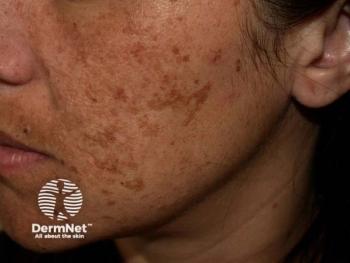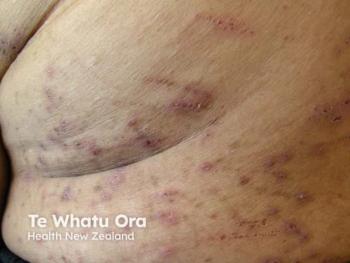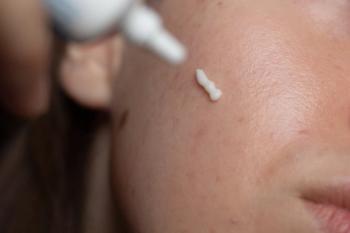
Mentorship Program Targets Real-World Representation

Key Takeaways
- The initiative by SOCS and NMA aims to improve diversity in dermatology research through mentorship and education for early-career dermatologists.
- The program addresses the underrepresentation of minority populations in clinical trials, focusing on geographic and subspecialty diversity.
Mentors and mentees include specialists in complex medical dermatology, pediatric dermatology, and procedural dermatology to diversify trial opportunities.
Efforts to improve diversity in dermatology research are gaining traction, with the Skin of Color Society (SOCS), in collaboration with the dermatology section of the National Medical Association (NMA), leading a new initiative designed to equip early-career dermatologists and private practice physicians with the tools and mentorship necessary to engage in clinical trials. In a recent interview with Dermatology Times, Tarannum Jaleel, MD, MHSc—co-chair of the SOCS Clinical Investigator Training Committee, dermatologist, clinician investigator, and translational researcher at Duke University—and Leandra A. Barnes, MD, committee co-chair and physician scientist at Stanford Dermatology, discussed the inception, collaboration, and objectives of this program.
Addressing Persistent Gaps in Representation
The mentorship program was born out of the 2022 “Meeting the Challenge” Summit in Washington, DC, where stakeholders examined the longstanding underrepresentation of minority populations in dermatology clinical research.1 Jaleel explained, “We had really missed the key step on developing a collaborative effort to advance the inclusion of underrepresented minorities in dermatology clinical trials.”
The issue remains pressing. As Barnes noted, a 2023 analysis in the Journal of the American Academy of Dermatology highlighted stark gaps in representation: only 7.9% of clinical trial participants identified as Black compared with 13.6% of the US census population, and 14.1% identified as Hispanic versus 18.9% nationally.2
“As you can imagine, there are huge gaps,” Barnes told Dermatology Times. “How do we make sure that clinical trials actually include the diverse patient populations that we're trying to serve? And, how do we make sure that our trialists are also representative of that as well?”
Building a Network of Mentorship and Education
The SOCS and NMA initiative focuses on mentorship as the cornerstone of its strategy. New clinicians—whether in academic or private practice—are paired with mentors who provide longitudinal guidance. Jaleel emphasized, “We partner young mentees with our more experienced mentors who are part of Skin of Color Society, who had generously volunteered their time in the first year of setting up this program, as well as some formal coursework and longitudinal mentorship.”
To foster collaboration beyond the 1-on-1 model, the program also incorporates group discussions, quarterly meetings, and an annual in-person session. “We really want the session to be more of an open Q&A discussion where mentees have an opportunity to bring up something that they're dealing with, that all the mentors can potentially weigh in [on],” Jaleel explained. “This also allows them to build a network, and I feel like this networking opportunity is priceless.”
Feedback has already influenced program development, Jaleel noted: “We have a stipend for them to go visit the mentor so that they can see the mentor in action in their program, doing research, which I think has been like a fabulous addition. It wasn’t part of the initial year, but we budgeted into the following year based on feedback.”
Broadening Access and Scope
A central challenge in clinical trial recruitment is geographic and subspecialty diversity. Many trial sites remain clustered in large academic centers, leaving community-based practices and patients in “dermatology deserts” without access. The SOCS program seeks to address this by including both academic and private practice physicians. “Our goal here is really to train as many people as possible with the resources that we can allot,” Jaleel said.
Barnes added that mentorship extends to encompass complex subspecialties. “In skin of color dermatology, oftentimes people immediately think of pigmentary disorders, but a lot of the work that people are doing are also in complex medical dermatology, procedural dermatology, pediatric dermatology… This mix of perspectives is what will really allow us to expand trial access nationwide.”
Long-Term Vision
Ultimately, the program’s architects envision a shift in the landscape of dermatology research. Barnes described the long-term goal as empowering program alumni to lead trials that reflect “the diversity of the US population—geographically, demographically and just across practice settings. Not limiting to academia, as people typically think, making sure that community practice is represented as well.”
For Jaleel, the hope is that more representative trial populations will lead to therapies that perform reliably in real-world practice. “At the end of the day, our goal is to make these drugs work for everyone, and to be able to do that, we need that diverse population… because we are running into where some of these drugs aren’t working for all our patients, and there could be many, many factors for that. But we can’t always know what those are if we are seeing different outcomes from what we see in trials in the real world.”
Barnes echoed this vision, stating, “Improving our representation in our clinical trials will allow for more equitable participation in our trials, research findings that are generalizable, and therapies that ideally work for everyone. That’s the dream. That’s the goal.”
By strengthening the pipeline of diverse investigators and expanding trial access to underserved populations, the SOCS mentorship program seeks to close critical gaps in clinical research and ultimately improve outcomes for patients across all backgrounds.
References
- Cobb CBC, Heath CR, Byrd AS, et al. The Skin of Color Society's meeting the challenge summit, 2022: Diversity in dermatology clinical trials proceedings. JAMA Dermatol. 2023;159(7):757-762. doi:10.1001/jamadermatol.2023.1285
- Mineroff J, Nguyen JK, Jagdeo J. Racial and ethnic underrepresentation in dermatology clinical trials. J Am Acad Dermatol. 2023;89(2):293-300. doi:10.1016/j.jaad.2023.04.011
Newsletter
Like what you’re reading? Subscribe to Dermatology Times for weekly updates on therapies, innovations, and real-world practice tips.


















